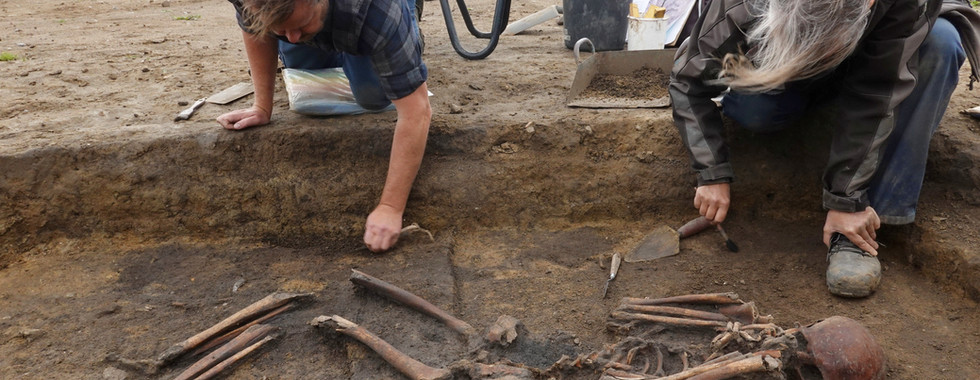Danish archaeologists unearth 50 Viking skeletons
- News Agency
- Sep 28, 2024
- 2 min read

COPENHAGEN - The excavation of a large Viking-era burial site in Denmark has unearthed 50 unusually well-preserved skeletons that archaeologists expect will help shed light on the lives of the Nordic people best known for their seafaring exploits in the Middle Ages.
The skeletons, discovered near Denmark's third-largest city Odense, were kept intact by high water levels and favorable soil conditions that prevented them from decomposing, according to Michael Borre Lundoe, the excavation leader from Museum Odense.
"Normally when we excavate Viking graves, we'd be lucky if there were two teeth left in the grave besides the grave goods. But here we have the skeletons fully preserved," said Lundoe.
"The skeletons are so amazing. They are so well preserved. There are five fingers, five toes. And that opens up a whole new set of possibilities for discoveries," he said.
Rare artifacts such as knives, glass pearls and brooches dated between year 850 to 970 were also found at the excavation, which began six months ago.
Lundoe said the grave gifts indicate most of the people were part of a small community of farmers, although a woman of higher status was buried with a silver-ornamented knife and a piece of glass which was rare in the Viking Age.
Archaeologists took soil samples to search for pollen to determine which season the person was buried in and what textiles they wore.
An x-ray of a soil block from the site revealed an oval brooch, an iconic Viking Age jewelry piece associated with women's garments, covered with wood and human remains.
On the back of another brooch with period-specific ornaments, mineralized woven textile fragments provided evidence of the type of dress worn in the Viking Age, the archaeologists said.
Most of the skeletons have been removed from the graves and packed in cardboard boxes at the museum to dry out before the examination and final cleaning.
-(Reuters)



















.png)








Comentarios